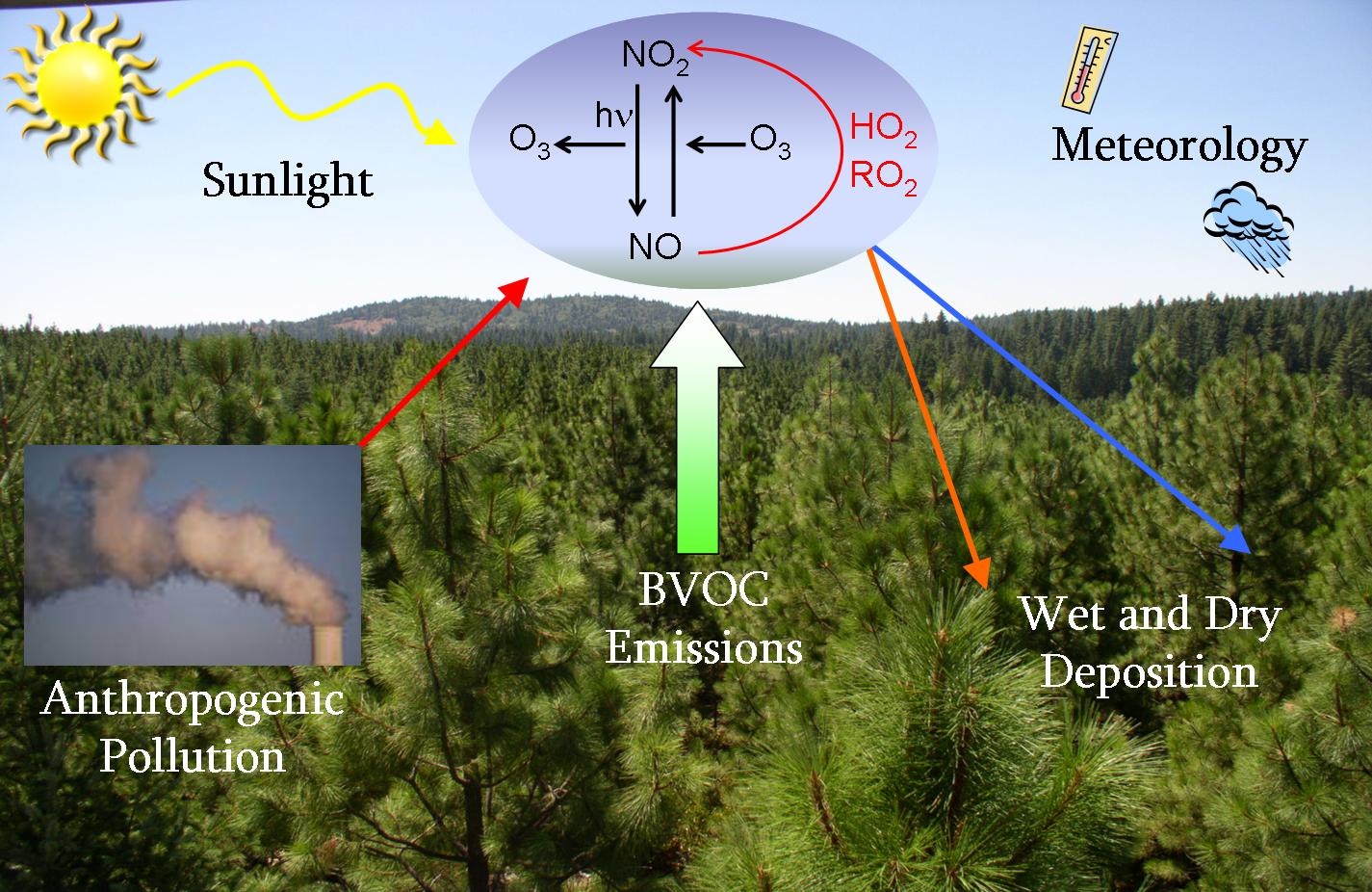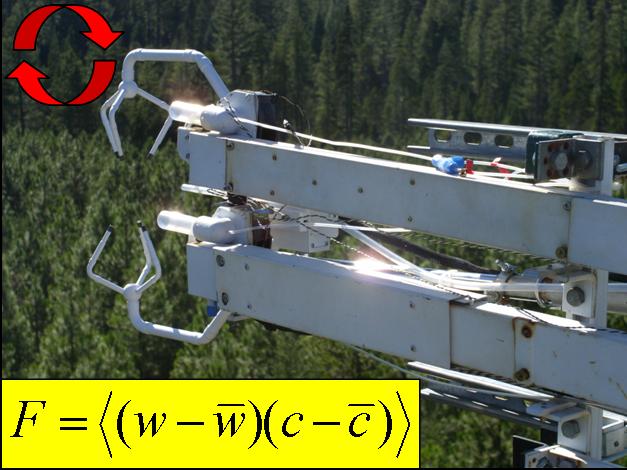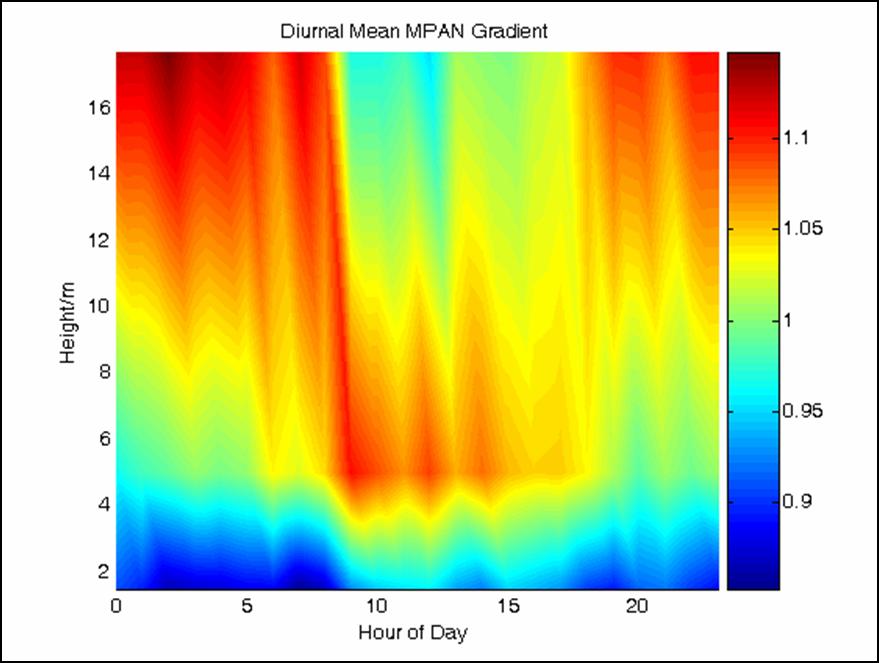

| Home Contact Information Group Members Research Projects Publications C.V. Department of Atmospheric Sciences |
| OVERVIEW
How does the biosphere influence the fate of an
urban plume? How do
anthropogenic emissions and their photochemical products (e.g. ozone,
PAN, nitric acid) interact with natural emissions from the biosphere? Predicting
the consequences of future changes in climate and anthropogenic
activities requires a detailed understanding
of atmospheric chemistry at the urban-rural
interface. To address the complex questions
surrounding the coupling of anthropogenic
and biogenic activities, we we are currently engaged in the Biosphere
Effects on Aerosol and Photochemistry Experiment (BEARPEX), a
collaborative field campaign taking place at the UC-Berkeley Blodgett
Forest Research Station (BFRS) in August and September of 2007 and
2009. BFRS is an ideal location for
investigating the
interaction of urban and biogenic emissions, as the
site regularly intercepts plumes from the Sacramento Valley.
THE CAMPAIGN  In the summer of 2007, we
deployed our chemical ionization mass spectrometer (CIMS) for 10 weeks
to measure
canopy-level fluxes and vertical gradients of a suite of acyl
peroxy nitrates (APNs) above and within the
forest canopy. With more than 20 instruments from 12 research groups,
the campaign provided the comprehensive dataset necessary to test our
understanding of the multifaceted mechanisms controlling atmospheric
composition at this site. Our specific goals for this campaign include:
In the summer of 2007, we
deployed our chemical ionization mass spectrometer (CIMS) for 10 weeks
to measure
canopy-level fluxes and vertical gradients of a suite of acyl
peroxy nitrates (APNs) above and within the
forest canopy. With more than 20 instruments from 12 research groups,
the campaign provided the comprehensive dataset necessary to test our
understanding of the multifaceted mechanisms controlling atmospheric
composition at this site. Our specific goals for this campaign include:- Inferring the relative contributions of surface deposition and within-canopy chemistry to the net vertical APN flux above the forest via direct eddy covariance measurements of APN fluxes - Exploring the unique physical and chemical processes occurring within the forest canopy via observation of APN gradients within and above the canopy - Characterizing the role of anthropogenic and biogenic VOC in the evolution and fate of the Sacramento urban plume with our speciated APN measurements  BEARPEX
2007 was an exciting campaign for the Thornton group, as it represented
both the first deployment of our new field-dedicated CIMS and our first
use of the CIMS in an eddy covariance (EC) mode. EC is a powerful
technique that utilizes fast simultaneous measurements of vertical wind
speed and scalar properties (e.g. chemical concentrations). The
vertical flux of the scalar is simply the covariance of these two
measurements over the observations period (typically 30 minutes); thus,
we obtain a direct observation of air-surface exchange processes. CIMS
is an ideal technique for this application, as it is capable of making
fast (>1 Hz), high-precision measurements under relative harsh field
conditions. BEARPEX
2007 was an exciting campaign for the Thornton group, as it represented
both the first deployment of our new field-dedicated CIMS and our first
use of the CIMS in an eddy covariance (EC) mode. EC is a powerful
technique that utilizes fast simultaneous measurements of vertical wind
speed and scalar properties (e.g. chemical concentrations). The
vertical flux of the scalar is simply the covariance of these two
measurements over the observations period (typically 30 minutes); thus,
we obtain a direct observation of air-surface exchange processes. CIMS
is an ideal technique for this application, as it is capable of making
fast (>1 Hz), high-precision measurements under relative harsh field
conditions. The above figure illustrates the full time series of PAN measurements made at the flux measurement height (17.7m), as well as the calculated EC flux of PAN and the exchange velocity ( = flux/concentration). The daily arrival of the plume is prominent in the PAN concentrations, although larger timescale contributions to the variability are also evident. Diurnal cycles are present in the flux and exchange velocity series as well, although the processes controlling these variations (e.g. turbulence intensity and stomatal activity) are quite different from those influencing the concentrations (primarily plume advection and air temperature). Further analysis of this data is shown in the following figures.  
BEARPEX 2009 While our focus in 2007 was primarily on APNs, the versatility of the CIMS technique presents the potential to detect many other species, including HNO3, NO3, N2O5 and organic acids. We intend to utilize these capabilities during the next field mission while continuing to improve our understanding of APN chemistry within and above the forest. Possible field experiments include: - Flux divergence measurements of APNs to investigate the potential chemical APN source in the canopy - Measurements of NO3/N2O5 reactivity on atmospheric aerosol - Observations of gas and aerosol-phase organic acids via the MOVI-CIMS technique developed in our lab. This material is based upon work supported by the National Science Foundation under Grant No. 0633897. Any opinions, findings, and conclusions or recommendations expressed in this material are those of the author(s) and do not necessarily reflect the views of the National Science Foundation. |
| Setup for eddy covariance measurements, involving a sonic anemometer and colocated inlet lines placed on a tower ~10m above the forest canopy top. |
| Diurnal progression of relative
gradient in MPAN concentrations. A bulge in MPAN is apprent in the
middle of the canopy (canopy height = 8m), indicating a photochemical
MPAN source. Positive nighttime gradients suggest a surface sink during
these times. |